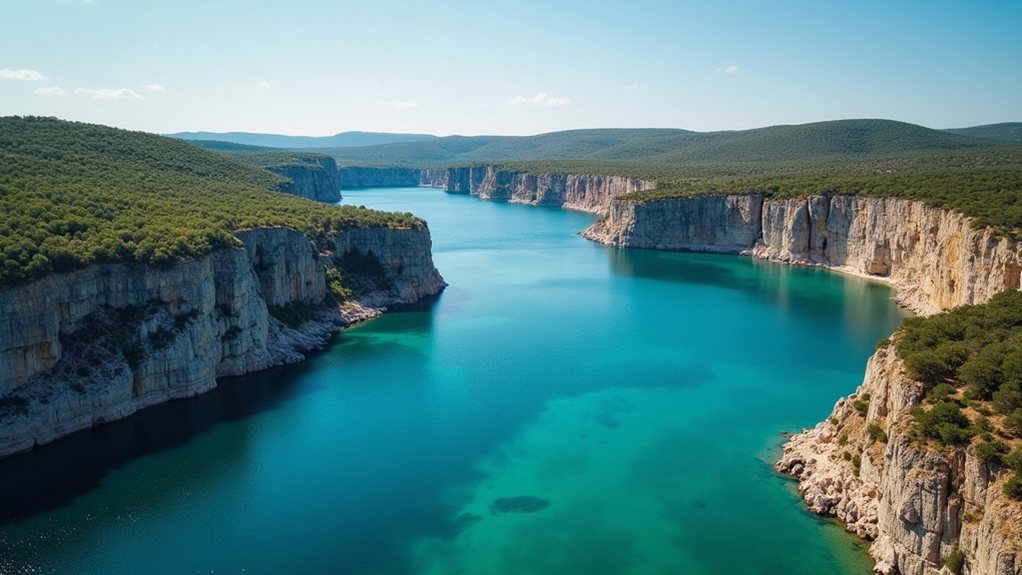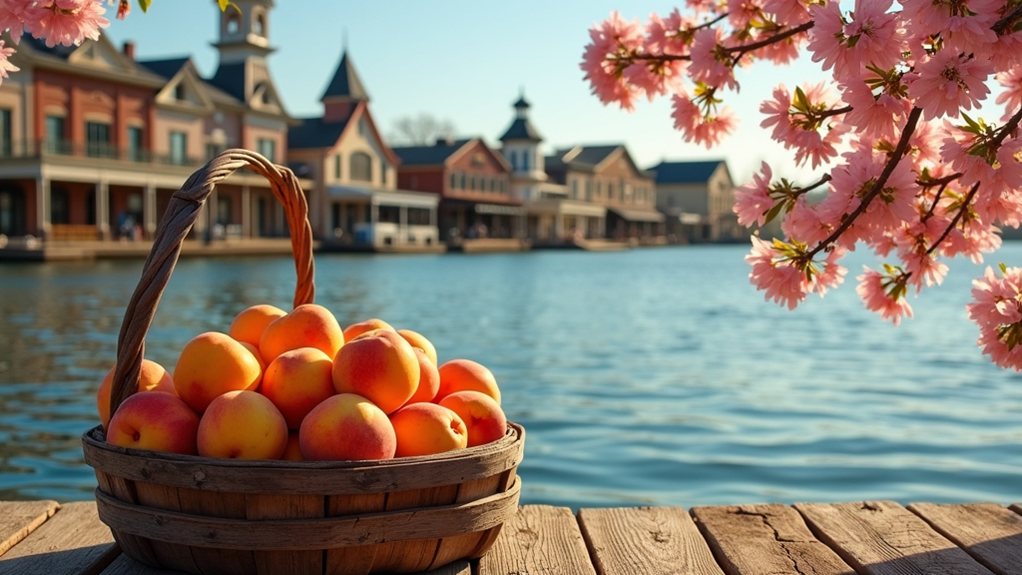The eye-popping blue waters of Lake Travis, often mistaken for a Caribbean getaway, have become something of a Texas legend. Located just outside Austin, this natural wonder dazzles visitors with its aquamarine hue that contrasts dramatically against the rugged limestone cliffs. It’s not just pretty, though—there’s real science behind that enchanting color, and it’s not what most folks assume. The explanation involves a fascinating mix of geology, light physics, and a few quirks unique to this beloved Lone Star landmark.
The Science Behind Travis’s Stunning Blue Waters

A dazzling jewel in the Texas landscape, Lake Travis enchants visitors with its striking blue-green waters that shimmer under the Lone Star State‘s abundant sunshine. This magnificent reservoir, situated among limestone cliffs northwest of Austin, owes its distinctive color to a unique combination of geological and environmental factors that transform ordinary water into a spectacle of nature.
The secret behind Lake Travis’s mesmerizing blue hues lies primarily in its limestone surroundings. These ancient rock formations slowly dissolve into the water, releasing minerals that improve the water’s clarity and contribute to its remarkable color. Unlike lakes in flatter terrain, the mountainous setting of Lake Travis provides abundant dissolved minerals that interact with sunlight in ways that produce that jaw-dropping blue-green appearance, especially on clear, sunny days. The elevation and geographical features of the area create ideal conditions for mineral runoff that enhances the lake’s vibrant coloration.
Water depth plays a vital role in the lake’s visual appeal, with deeper sections displaying more intense blue tones. When conditions are calm, sediment settles to the bottom, allowing sunlight to penetrate deeper and reflect back in stunning azure shades. The clarity of Travis water, particularly during certain seasons, enables this light interaction that makes visitors reach for their cameras. This settling process mirrors what occurs during blue water days in coastal areas when winds calm and sediment drops to the bottom. Much like those seeking respite from Portland’s urban bustle find in Tillamook’s shoreline, Lake Travis offers visitors a peaceful escape from Texas city life.
Seasonal changes transform the lake throughout the year, with winter bringing increased clarity as lower temperatures reduce algal growth. Much like the cascading waterfalls of Fall Creek Falls State Park in Tennessee, the views of Lake Travis offer breathtaking vistas that showcase nature’s artistic prowess. By contrast, summer can occasionally bring challenges in the form of blue-green algae blooms, particularly species like Anabaena and Microcystis, which can alter the water’s appearance and potentially produce harmful toxins.
Lake Travis stands in stark contrast to other Texas water bodies, particularly compared to the sediment-rich waters along the Upper Gulf Coast near Galveston. While coastal waters often appear brown due to river sediment and organic materials, Travis maintains its characteristic blue that draws comparisons to Caribbean destinations.
For Texans seeking a local getaway with views that rival far-flung exotic locales, Lake Travis offers an accessible escape where the water’s brilliant blue color serves as both natural wonder and photographer’s dream.








